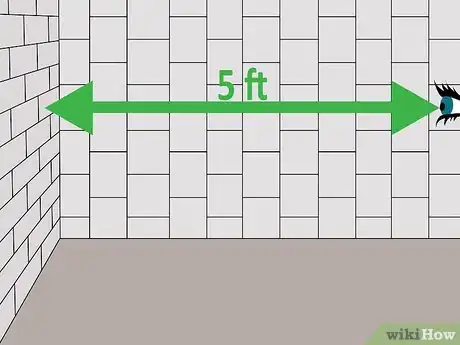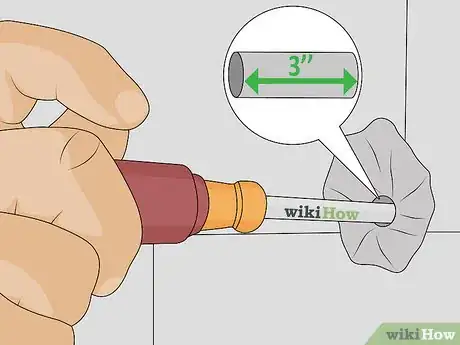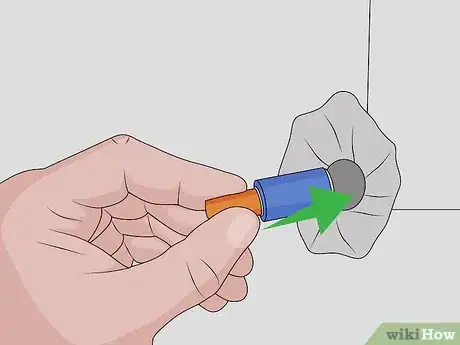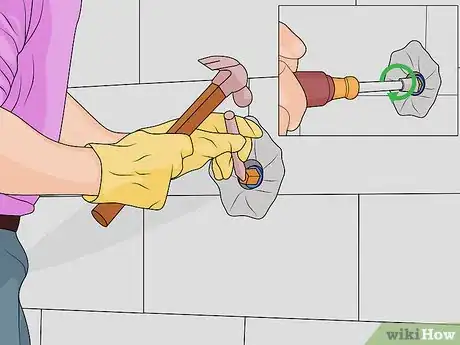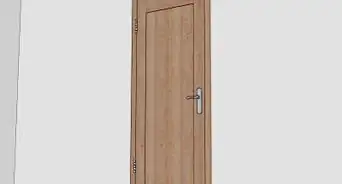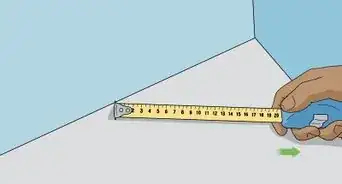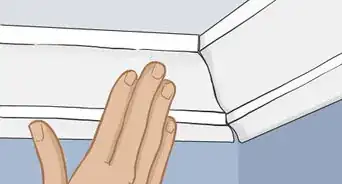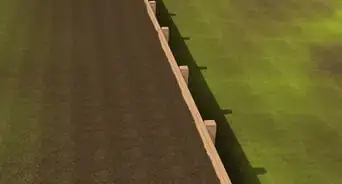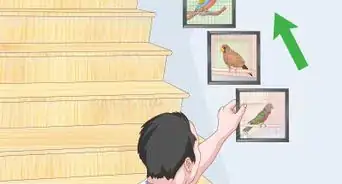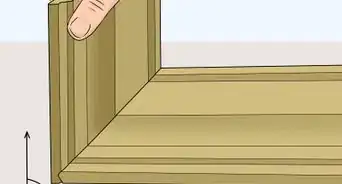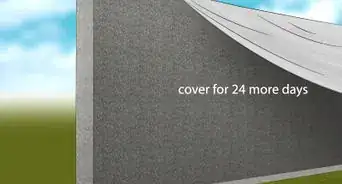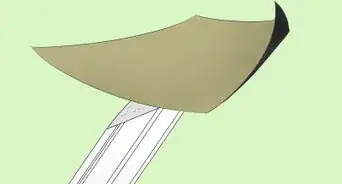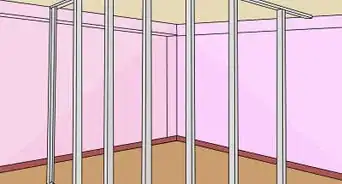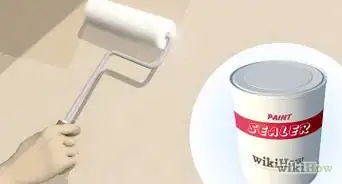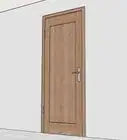wikiHow is a “wiki,” similar to Wikipedia, which means that many of our articles are co-written by multiple authors. To create this article, 10 people, some anonymous, worked to edit and improve it over time.
This article has been viewed 61,149 times.
Learn more...
The most advanced repair methods for stopping water are the use of compressed swell plugs which contain polyurethanes that are water-activated. Water-activated materials can co-exist in wet environments longer and more effective than conventional bonding materials such as hydraulic cement products or caulking. Exposure to moisture will activate the polyurethane body and fully expand over a three week period causing additional sealing pressure beyond the initial compressed seal gained from tightening.
Steps
Locating and Opening the Tie Rod Holes
-
1Observe the entire wall from a distance of five feet (0.13 meters) away after the location of the first tie rod hole leak. Viewing the wall in this method will help see the others as they may appear as a small extrusion or irregularity in the surface of the concrete.
- Most homes will have tie rod reinforcement holes every eighteen inches (0.46 meters) across the wall.[1]
- Eight-foot high walls (2.44 meters) have two rows approximately one foot (0.30 meters) from the floor and the upper row is approximately five feet (1.52 meters) from the floor.
- Ten-foot (3.05 meters) high walls will have three rows with the first row approximately three feet (0.91 meters) high from the floor and three feet (0.91 meters) higher for each of the remaining two rows.
- Normally the upper and lower rows align vertically with each other.
-
2Use a standard hammer by rapping on the area until the 5⁄8 inch (1.6 cm) (15.88 millimeters) hole is fully exposed and the edges of the hole are hammered away to a beveled edge. In most cases the front of the tie rod hole will have a ¼ inch (6.35 millimeters) to 1/2” inch (12.70 millimeters) cosmetic covering of concrete.[2]Advertisement
-
3Properly expose the existing 5/8 inch (15.88 millimeters) diameter tie rod hole to a depth of three inches (76.20 millimeters). Take a standard screwdriver, dowel rod, or a tie rod bar to finish exposing the hole to a 3 inch (76.20 millimeters) depth.
- If necessary, the area may need to be drilled out using a 5/8 inch (15.88 millimeters) masonry bit.
- If the tie rod hole has been repaired before, it will be necessary to drill the hole out using a 5/8 inch (15.88 millimeters) masonry bit.
-
4After properly exposing the tie rod hole, remove any debris in the tie rod hole by flushing out with clean water or vacuuming.
Sealing the Tie Rod Holes
-
1Insert a water activated compressed swell plug into the exposed tie rod hole.[3]
-
2Hand tighten by turning the coupler end.[4]
-
3Once snug, lightly tap the end of the coupler with a hammer until the coupler is flush with the wall. Finish tightening to a snug fit with a 3/8 inch (9.53 millimeter) socket or a 3/8 inch (9.53 millimeter) nut driver. Do not over tighten as it may cause the plug to spin or fail.
-
4Leave as is or cover with a suitable hydraulic cement or comparable masonry product that can be found at home improvement stores.[5]
Community Q&A
-
QuestionCan I use a plug if the tie rod hole is leaking?
 ScienceTipCommunity AnswerYes, it is designed to activate slowly with water, so you can insert and tighten as water is entering the hole.
ScienceTipCommunity AnswerYes, it is designed to activate slowly with water, so you can insert and tighten as water is entering the hole. -
QuestionHow do I cut the steel rod in the tie rod hole?
 ScienceTipCommunity AnswerTo cut a steel tie, you will need a diamond-blade grinder and safety glasses.
ScienceTipCommunity AnswerTo cut a steel tie, you will need a diamond-blade grinder and safety glasses. -
QuestionWhy would a plug be installed every 18 inches all around the interior basement perimeter walls?
 Sherrill Dean TeasterCommunity AnswerThis is when tie rods are removed from dimensional form shuttering, leaving the holes empty.
Sherrill Dean TeasterCommunity AnswerThis is when tie rods are removed from dimensional form shuttering, leaving the holes empty.
Warnings
- Polyurethane compressed swell plugs are not designed to be used when the tie rod reinforcement hole has a wall crack located through it, nor is it designed to be used when the tie rod reinforcement hole is located within a honeycomb area of concrete (where excessive aggregate has cured in a given area causing seepage through the aggregate).⧼thumbs_response⧽
- Compressed swell plugs cannot be used on snap ties. Snap ties are small metal bars in the concrete wall that have been broken off. Sometimes this forming method is used instead of conventional 5⁄8 inch (1.6 cm) (15.88 millimeters) reinforcement rods.⧼thumbs_response⧽
